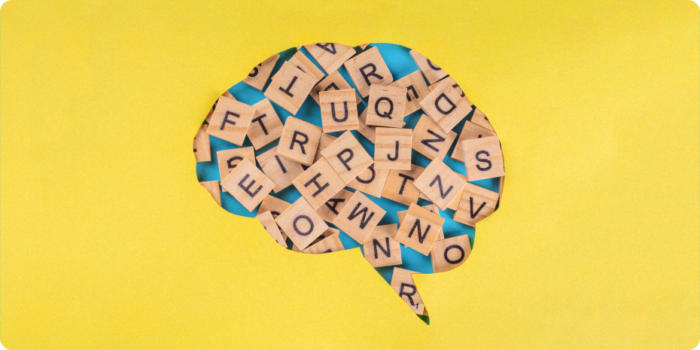
Simple beginner’s guide to learning the English alphabet
Learning the English alphabet is the foundation of mastering the English language. This guide will help beginners understand and memorize the 26 letters that form the basis of written and spoken English. Whether you’re starting from scratch or refreshing your knowledge, this step-by-step approach will set you on the path to English proficiency.
Basics of the English alphabet
The English alphabet forms the foundation of the language, consisting of 26 distinct letters. These letters are divided into two main categories: vowels and consonants. The vowels, A, E, I, O, and U (with Y sometimes joining their ranks), play a crucial role in forming syllables and determining word pronunciation. The remaining 20 or 21 letters are consonants, which provide the framework for words and contribute to their meaning and structure.
Each letter in the English alphabet has two forms: uppercase (capital) and lowercase. This distinction is essential for proper grammar and conveying meaning in written English. The alphabet follows a specific order, from A to Z, which is used extensively in organizing information, from simple lists to complex filing systems. Interestingly, some letters appear more frequently in English text than others, with ‘E’ being the most common and ‘Q’ the least used.
Learning the alphabet
Mastering the English alphabet involves several key aspects:
- Letter recognition: Identifying each letter by its shape and name
- Sound association: Learning the sounds each letter can make
- Writing practice: Forming both uppercase and lowercase letters correctly
One effective method for beginners to learn the alphabet is through the use of mnemonics and visual aids. For example, associating each letter with a familiar object or animal can help with memorization: ‘A’ for apple, ‘B’ for bear, ‘C’ for cat, and so on. This technique not only aids in remembering the letters but also introduces new vocabulary.
Another effective approach to mastering the alphabet is through regular practice with interactive exercises. Writing letters repeatedly helps develop muscle memory, while tracing exercises can improve letter formation. Many learners find success in using alphabet songs or rhymes, which not only make the learning process more enjoyable but also reinforce the correct order of letters.
It’s important to practice both reading and writing the alphabet. Reading alphabet books, identifying letters in everyday text, and playing letter recognition games can significantly boost learning. For writing practice, start with large letters and gradually decrease size as control improves.
Pronunciation basics
Proper pronunciation of the alphabet is crucial for effective communication in English. Each letter has at least one distinct sound, with many having multiple sounds depending on their position in a word. Vowels, in particular, can be challenging as they often have short and long sounds. For instance, ‘A’ can sound different in “cat” versus “cake”. Consonants generally have more consistent sounds, but there are exceptions like the soft and hard sounds of ‘C’ and ‘G’.
Learning to pronounce the alphabet correctly involves listening to native speakers, practicing mouth and tongue positions, and understanding basic phonetic rules. It’s beneficial to focus on troublesome letter sounds that might not exist in one’s native language. Remember, English pronunciation can be irregular, so exposure to various words and contexts is essential for mastering letter sounds.
The alphabet in daily life
The English alphabet extends far beyond simple reading and writing – it’s deeply ingrained in everyday life and culture. Alphabetical order is used extensively in organizing information, from dictionaries and encyclopedias to contact lists on smartphones. Understanding this order is crucial for efficient information retrieval in academic, professional, and personal contexts.
Moreover, the alphabet forms the basis of many acronyms and initialisms used in business, technology, and popular culture. From BBC (British Broadcasting Corporation) to DIY (Do It Yourself), these letter-based abbreviations are ubiquitous in English-speaking societies. The alphabet also plays a role in grading systems, with letters A through F commonly used to denote academic performance.
Building on alphabet knowledge
Once learners have a solid grasp of the alphabet, they can begin to explore more complex aspects of the English language. Understanding how letters combine to form digraphs (like ‘th’ or ‘sh’) and diphthongs opens up new dimensions in pronunciation and spelling. Learners can start recognizing patterns in word formation, which aids in expanding vocabulary and improving spelling skills.
This foundational knowledge of the alphabet also facilitates learning cursive writing, which, though less common in digital communication, remains an important skill in many contexts. As learners progress, they can explore the fascinating history of the English alphabet, including its evolution from ancient scripts and its relationship to other alphabetic systems.
Common challenges and solutions
Learning the English alphabet can present several challenges, especially for non-native speakers. One common issue is distinguishing between similar-looking letters such as ‘b’ and ‘d’, or ‘p’ and ‘q’. Another difficulty lies in mastering the various sounds associated with each letter, particularly vowels. To overcome these challenges, learners can use visual mnemonics, practice writing letters in different sizes, and engage in regular listening exercises focusing on minimal pairs (words that differ by only one sound).
Consistency in practice is key to overcoming these hurdles. Setting aside dedicated time each day for alphabet practice, even if just for a few minutes, can lead to significant improvements over time.
Fun ways to practice
Incorporating enjoyable activities into the learning process can significantly enhance retention and motivation. Here are some engaging ways to practice the English alphabet:
- Alphabet scavenger hunts
- Letter-based word games (e.g., Scrabble, Boggle)
- Creating alphabet art or crafts
- Singing alphabet songs
- Playing online alphabet games
These activities not only reinforce alphabet knowledge but also make the learning process more enjoyable and interactive. They can be particularly effective for younger learners or those who prefer a more hands-on approach to language acquisition.
The path forward
Mastering the English alphabet is a crucial first step in the journey of learning English. It opens the door to reading, writing, and effective communication in one of the world’s most widely spoken languages. While self-study and digital resources are valuable, the guidance of a skilled instructor can significantly accelerate learning and ensure proper technique from the start.
This is where platforms like Repetry come into play. By connecting learners with experienced English teachers, Repetry offers personalized instruction tailored to individual needs and learning styles. Regular lessons with a qualified tutor can provide structured learning, immediate feedback, and the opportunity to practice pronunciation with a native or fluent speaker.




